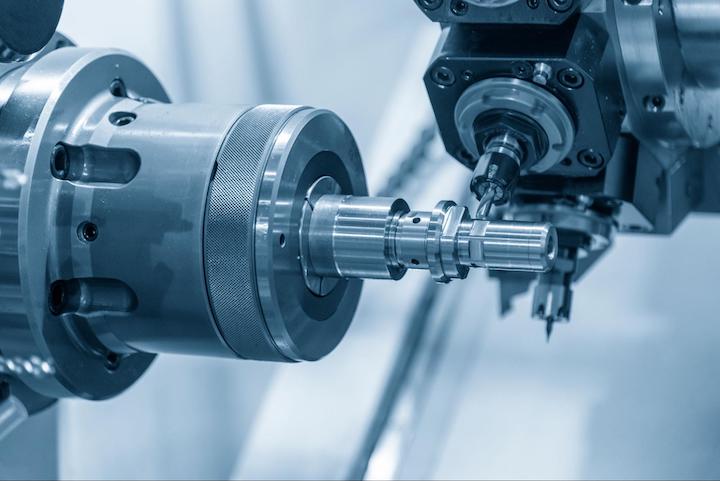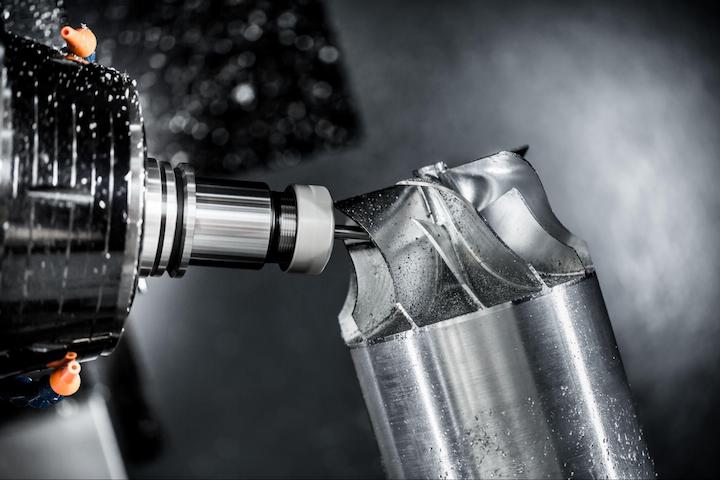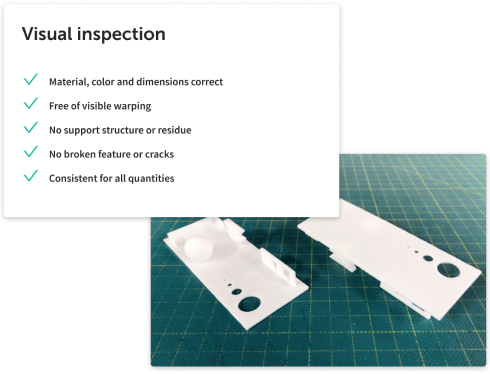Time to read: 7 min
Time is money, and when you’re replacing a safety-critical part on a conveyor belt, needing interim production parts due to a line-down situation, or working on a new product to show a customer in a few days, fast CNC machined parts can save or make you a lot of cash. Nothing is more frustrating to an engineer, buyer, or designer than a long CNC lead time on a part or waiting days for a quote to come back, only to realize the machine shop can’t complete the work.
Our most recent State of Manufacturing Report makes clear: Across companies of all sizes, increasing the speed of new product innovation has become much more important in 2023 (49%, a jump of 11% YoY), especially for engineering leaders. Fortunately, there are ways to reduce CNC lead times so you can keep leadership happy and improve your career prospects! Read on to learn how to get your CNC parts faster.
Tip One: Choose Suppliers That Handle Complex Requirements at Rapid Speeds
Not every machine shop is built to handle complex CNC parts because precision takes time. And while precision parts aren’t easy to create quickly, online manufacturers like Fictiv are built to deliver parts fast, no matter how complex the design is.
Pro-Tip: If you want to see how complex your part is, take our CNC Part Complexity Quiz.
While the process of determining if a potential supplier can handle complexity and precision at rapid speeds isn’t simple, here are some key questions to ask a potential supplier that will help you figure it out:
- Can they handle tight tolerances? Experience has taught me that if a supplier can’t tell you what tolerances they can achieve, that’s a red flag. A good supplier should be transparent and proud of the tight tolerances they are able to machine.
- Do they have a quality manual or quality management system? Having an effective quality management system means that a machine shop is more likely to handle your high-complexity requests correctly the first time. Even if its absence isn’t a deal breaker for you, it should still be a consideration.
- Is their equipment properly maintained? As a college intern, I set up a preventive maintenance program for an electroplating facility — the process was incredibly complicated and tedious, but it made a huge difference in the equipment’s performance and the shop’s productivity. If you need complex CNC machined parts at rapid speeds, always check to see if a potential supplier takes maintenance of their equipment seriously. Generally, a supplier with a reputable quality management system certification will also have a strong and audited preventive maintenance program.
- Do they have experience machining the complexity you need? Review the company’s case studies or ask for information about how they have handled a similar part — a good supplier will be more than happy to share this information with you.
Reduce CNC Lead Time for Larger Parts

In general, it’s reasonable to expect longer lead times for larger parts — even for the best suppliers — because more material must be removed, and the machining time is longer. However, if you need rapid CNC machining of large parts, you can make design changes that will shorten the time to manufacture them and work with suppliers suited to the task.
Reduce CNC Lead Time for Undercuts

Traditionally, undercuts have posed challenges in manufacturing because they require special tools and longer lead times. However, Fictiv’s strong partnerships and continuous platform enhancements have successfully reduced the lead time for these critical components. This means that you can now keep the essential design elements of your parts while receiving them quicker than ever before.
Tip Two: Prioritize Quality Assurance to Shorten CNC Lead Time
As an engineer, you know that encountering quality issues during the final inspection phase can be incredibly frustrating. Quality assurance issues extend your lead time and lead to future delays as you document and resolve the underlying quality problems.
Furthermore, choosing a supplier with exceptional quality assurance practices and processes can dramatically improve CNC lead times in a few ways:
- Minimizing rework and reordering – If the job is done right the first time, you won’t waste time and money returning to have it fixed or completely machined over again.
- Detecting manufacturing or manufacturability issues before production – Suppliers that take quality seriously do so from the time an order is placed, to prevent delays in production from ever happening.
- Strong communication goes hand in hand with excellent quality assurance practices – This communication often extends to improved issue resolution, collaboration, and prevention of recurrence.
- Strong quality assurance paves the way for strong quality control – Quality escapes are something nobody wants to deal with.
While you may not be able to physically ensure that every single part is made to the quality standards your company requires, it is your responsibility to manage your supplier’s quality and to choose suppliers that meet your needs — and supplier quality management is best carried out with a collaborative and proactive approach.
Communication about quality is absolutely essential. If outsourcing any manufacturing or purchasing custom parts, you need a robust supplier quality management process — check out this guide from ASQ for tips on creating a more robust process for your company. And check with the ISO standard’s quality management system requirements for more specifics if customers or accreditation bodies, like ISO, will be auditing you.
Regardless of which standard you model, your supplier quality management is easier if you choose a supplier who prioritizes quality assurance. Partnering with a supplier who prioritizes quality without compromising on production speed is crucial for optimizing CNC lead time.

Transparent Production and Quality Practices
Not all suppliers are equal when it comes to quality, and rapid CNC lead times aren’t so rapid when you have to re-order parts multiple times to get the quality you need. Quality should be something your suppliers can validate, not merely claim as an unquantifiable goal. Fictiv has world-class quality assurance, and the statistics back our claim:
- 97% of parts shipped on time
- 95.4% perfect orders
*Perfect orders are defined as being delivered on-time and in-full.
Click here for more information on Fictiv’s Quality Assurance.
If these are quality statistics you are looking for from a supplier, sign up for a free account or get an instant quote today!
Digital Quality Systems
Transparency is simple with a digital quality system that provides 24/7 access to production status and quality inspection results. And when you equip that same system with AI and machine-learning technology to identify and pre-empt manufacturability issues before a sale is made, the quoting and production processes are streamlined and efficient.

Tip Three: Optimize Supplier Communication
Communication is critical when you’re looking for rapid CNC machining and outsourcing precision CNC parts. Whether you outsource to a local machine shop or choose an online CNC machining service, if you want quality CNC parts, you must effectively communicate your design from the beginning.

Effective Manufacturing Drawings
Effective communication for getting a CNC machined part starts with how you articulate your product requirements before you obtain quotes. This process begins with ensuring your part and assembly drawings are thoroughly and correctly annotated, dimensioned, toleranced, and explained.
For tips on effectively communicating your design intent and CNC machining requirements, check out How To Make a Great Engineering Drawing Manufacturers Will Understand. If you need a quick refresher on GD&T, save a copy of our GD&T Cheat Sheet.
Optimized Request for Quote (RFQ) Packages
The next step may involve the creation of a request for quote (RFQ) package. They can be tedious and time-consuming, but taking the time to get them right from the beginning is worth it — it’s critical to your project’s overall success and speed. I’ve worked on both the requesting and submitting sides of manufacturing, and my experience taught me that ensuring RFQs are streamlined, and standardized is the best way to improve communication with suppliers when soliciting quotes.
Pro-tip: Check out How to Prepare Your Request for Quote Package for more tips on creating an effective RFQ.
Online CNC Machining
Ideally, the most efficient method of communication for any project is to have a single point of contact that handles all supplier communication. But, the volume of orders and complexity involved in supply chain management makes that nearly impossible for most companies who outsource CNC machining. So, many companies have quick-turn machined parts produced by online CNC machining suppliers instead.
Online CNC machining with a partner like Fictiv provides you with the following advantages:
- A digital single source of truth for all configuration, quoting, ordering, tracking, and related communication and management for sourcing activities
- End-to-end automation of traditionally manual supply chain tasks, like sourcing, reduces CNC lead times
- Instant quotes and DFM feedback to speed up the quoting process
Fictiv is the operating system for custom manufacturing that makes it faster, easier, and more efficient to source and supply mechanical parts. With our network of highly skilled manufacturing partners worldwide, you can go to one place for a wide range of capabilities while we manage all the logistics and quality on the backend, so you get high-quality parts, fast.
Quick FAQ
- What is rapid CNC machining? Rapid CNC machining is a manufacturing process that combines the precision and speed of CNC technology with quick turnaround times for CNC parts. Rapid is another way to emphasize the speed and efficiency at which parts can be produced, compared to traditional manufacturing methods, all afforded by the technological advancements of CNC machining and oftentimes AI power.
- What is lead time in CNC machining? Lead time in CNC machining encompasses several processes, which all take time to complete. The overall lead time to get a part CNC machined, once it is engineered and designed, includes (if required): supplier selection, quoting, ordering, material sourcing, manufacturing planning, machining setup, machining programming, machining/manufacturing, surface finish, assembly, inspection, quality control, documentation, additional post-processing, packaging, and shipping. A supplier like Fictiv can turnaround CNC parts in as little as 2 days!
- How can I reduce the cycle time in CNC machining? There are many ways to reduce cycle time in CNC machining such as following design for manufacturability feedback, choosing a machinable material, reducing complexity, and breaking larger parts into smaller parts that can be assembled. Check out our CNC Machining Design Guide for more tips.
Fictiv – Your Rapid CNC Partner
No matter how complex your designs, we’re here to help you make them a reality. Fictiv is your operating system for custom manufacturing that makes CNC part procurement faster, easier, and more efficient. Our manufacturing partners have some of the most talented machinists in the world that can make high-quality CNC parts to meet your specifications, fast.
Discover the Fictiv difference. Create an account and upload your design today!










